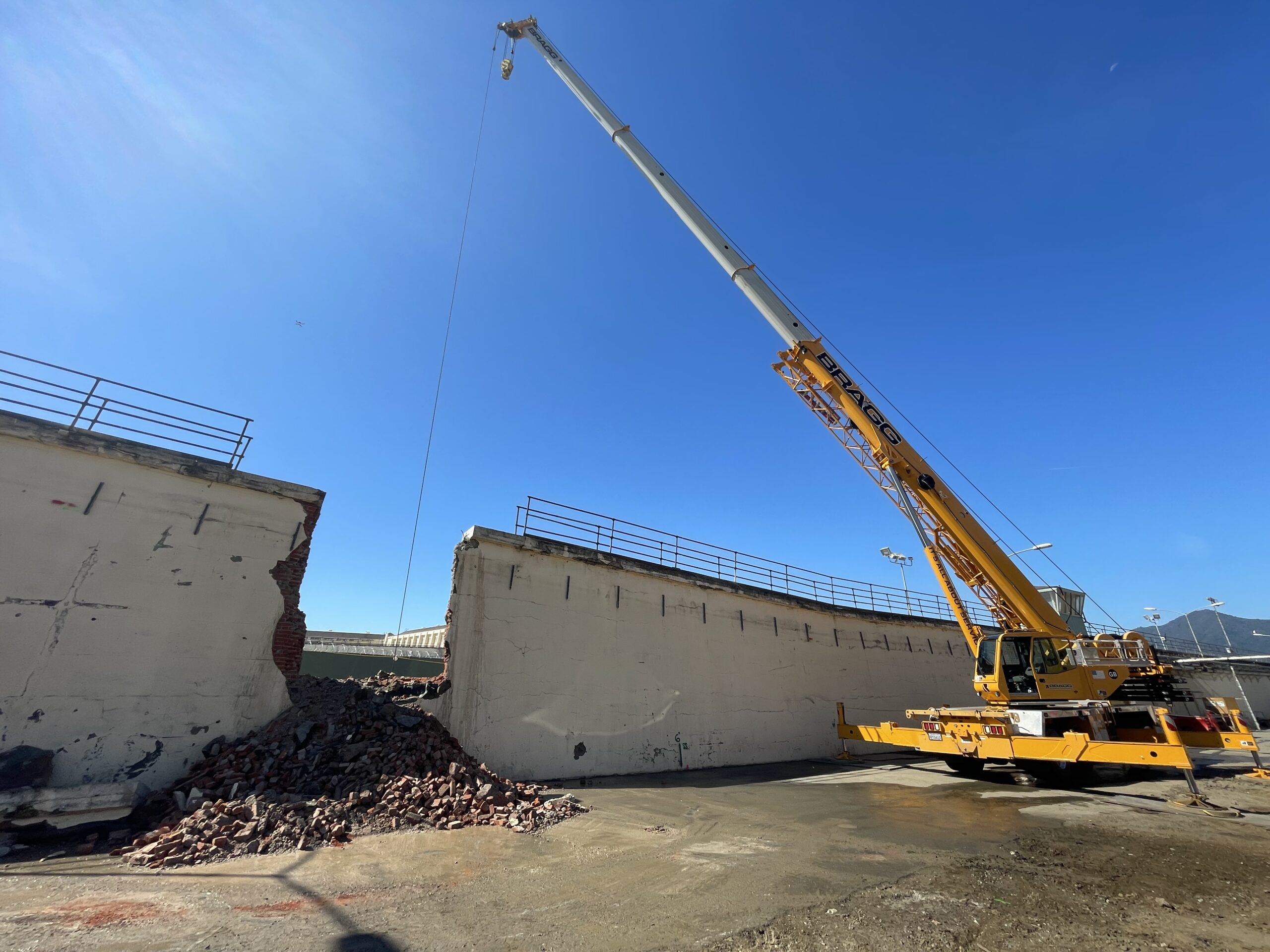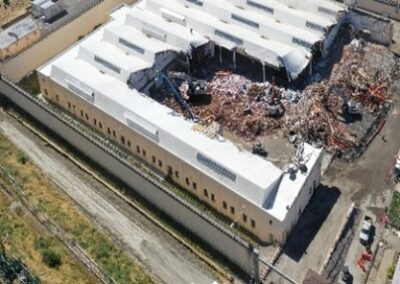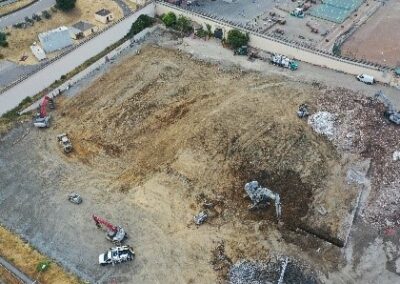Governor Newsom announces new milestone in transformation of San Quentin Rehabilitation Center
What you need to know: Governor Newsom announced that the demolition of the former warehouse is now complete – clearing the way for construction to begin on the new San Quentin Rehabilitation Center’s educational complex. Another phase of the project, the demolition of the interior South Wall, commenced to help improve access to the secure facility.
SACRAMENTO – Governor Newsom’s project to reimagine and transform San Quentin State Prison — the oldest and most notorious prison in California and previous home to the largest “death row” in the United States — has reached a significant milestone, and construction of the new education facility to improve public safety will soon begin.
“California is transforming San Quentin – our state’s most notorious prison – into the nation’s most innovative rehabilitation facility focused on building a brighter and safer future. We are literally tearing down walls to reimagine our prison system, incentivize true rehabilitation, and end cycles of violence and crime. Brick by brick, we’re building a new future that will make all of us safer.”
Governor Gavin Newsom
The project, first announced in May 2023, transformed San Quentin from a maximum-security prison into the “San Quentin Rehabilitation Center,” a one-of-a-kind facility focused on improving public safety through rehabilitation and education.
The historic effort at San Quentin, never pursued at this scale in the United States, will serve as a nationwide evidence-backed model to advance a more effective justice system that builds safer communities.
With the demolition of the prison’s previous furniture factory, Building 38, complete, construction of the new educational and vocational center will begin this fall. This week, work also began to demolish an interior wall, known as the South Wall, to increase access to the new facility. Removing this internal wall, which has separated portions of the facility since 1856, will open up the new complex to the existing institution and create a campus-like feel. The removal of the internal barrier has no impact on the facility’s security.

Initial demolition of the interior South Wall dividing the secure facility.
“The establishment of this new rehabilitative center marks a pivotal step toward fostering genuine transformation in our correctional system,” said California Department of Corrections and Rehabilitation Secretary Jeff Macomber. “We are not just rebuilding walls but constructing pathways to restoration and rehabilitation for those in our care.”
In May 2023, Governor Newsom announced the project would be led by the San Quentin Transformation Advisory Council, which includes stakeholders including CDCR staff, criminal justice experts, program providers, and formerly incarcerated individuals. Through their collaborative planning, they presented a unified concept: an inviting, adaptable, campus-like space that encourages rehabilitation. The buildings will support incarcerated individuals with educational and job training opportunities, including high-tech and innovative classroom space, meeting areas, and staff offices.
The construction project is part of a systemwide change called the California Model, a transformation effort instituted at multiple state prisons throughout California. The model improves public safety by breaking cycles of crime for the incarcerated population while improving workplace conditions for institution staff through rehabilitation, education, and restorative justice. Valley State Prison piloted the California Model before the model was expanded to seven other facilities, including San Quentin.
Today’s announcement builds on the Governor’s nation-leading efforts to strengthen public safety through justice reforms and innovation. Since taking office, the Governor has placed a moratorium on the death penalty, bolstered support for victims and survivors of crime, ended the state’s use of private for-profit prisons, taken action to disrupt the school-to-prison pipeline, announced sweeping reforms to end juvenile imprisonment, advanced jury representation, expanded the number of Board of Parole commissioners, signed legislation to build trust between communities and law enforcement, and announced record-level funding to bolster public safety, including through the Real Public Safety plan.




